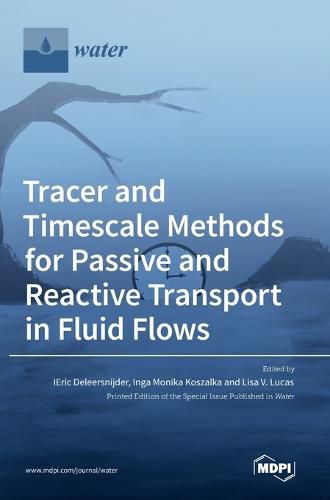Readings Newsletter
Become a Readings Member to make your shopping experience even easier.
Sign in or sign up for free!
You’re not far away from qualifying for FREE standard shipping within Australia
You’ve qualified for FREE standard shipping within Australia
The cart is loading…






This title is printed to order. This book may have been self-published. If so, we cannot guarantee the quality of the content. In the main most books will have gone through the editing process however some may not. We therefore suggest that you be aware of this before ordering this book. If in doubt check either the author or publisher’s details as we are unable to accept any returns unless they are faulty. Please contact us if you have any questions.
Geophysical, environmental, and urban fluid flows (i.e., flows developing in oceans, seas, estuaries, rivers, aquifers, reservoirs, etc.) exhibit a wide range of reactive and transport processes. Therefore, identifying key phenomena, understanding their relative importance, and establishing causal relationships between them is no trivial task. Analysis of primitive variables (e.g., velocity components, pressure, temperature, concentration) is not always conducive to the most fruitful interpretations. Examining auxiliary variables introduced for diagnostic purposes is an option worth considering. In this respect, tracer and timescale methods are proving to be very effective. Such methods can help address questions such as, "where does a fluid-born dissolved or particulate substance come from and where will it go?" or, "how fast are the transport and reaction phenomena controlling the appearance and disappearance such substances?" These issues have been dealt with since the 19th century, essentially by means of ad hoc approaches. However, over the past three decades, methods resting on solid theoretical foundations have been developed, which permit the evaluation of tracer concentrations and diagnostic timescales (age, residence/exposure time, etc.) across space and time and using numerical models and field data. This book comprises research and review articles, introducing state-of-the-art diagnostic theories and their applications to domains ranging from shallow human-made reservoirs to lakes, river networks, marine domains, and subsurface flows
$9.00 standard shipping within Australia
FREE standard shipping within Australia for orders over $100.00
Express & International shipping calculated at checkout
This title is printed to order. This book may have been self-published. If so, we cannot guarantee the quality of the content. In the main most books will have gone through the editing process however some may not. We therefore suggest that you be aware of this before ordering this book. If in doubt check either the author or publisher’s details as we are unable to accept any returns unless they are faulty. Please contact us if you have any questions.
Geophysical, environmental, and urban fluid flows (i.e., flows developing in oceans, seas, estuaries, rivers, aquifers, reservoirs, etc.) exhibit a wide range of reactive and transport processes. Therefore, identifying key phenomena, understanding their relative importance, and establishing causal relationships between them is no trivial task. Analysis of primitive variables (e.g., velocity components, pressure, temperature, concentration) is not always conducive to the most fruitful interpretations. Examining auxiliary variables introduced for diagnostic purposes is an option worth considering. In this respect, tracer and timescale methods are proving to be very effective. Such methods can help address questions such as, "where does a fluid-born dissolved or particulate substance come from and where will it go?" or, "how fast are the transport and reaction phenomena controlling the appearance and disappearance such substances?" These issues have been dealt with since the 19th century, essentially by means of ad hoc approaches. However, over the past three decades, methods resting on solid theoretical foundations have been developed, which permit the evaluation of tracer concentrations and diagnostic timescales (age, residence/exposure time, etc.) across space and time and using numerical models and field data. This book comprises research and review articles, introducing state-of-the-art diagnostic theories and their applications to domains ranging from shallow human-made reservoirs to lakes, river networks, marine domains, and subsurface flows